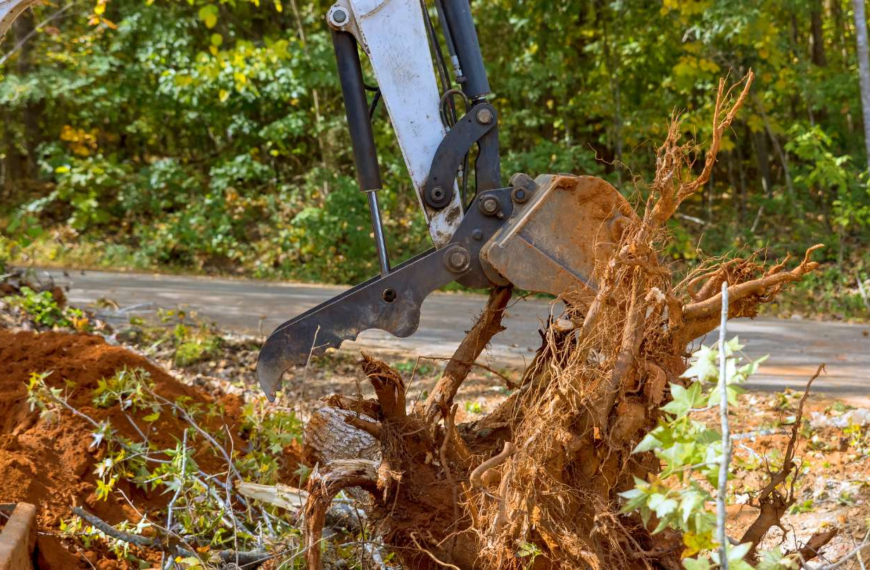| A: Between hard shoulder and carriageway | B: Separating driving lanes | C: Between carriageway and central reservation | D: At slip-road entrances and exits |
Understanding Green Reflective Studs on a Motorway
Motorways are engineered for high-speed travel, with various safety features to guide drivers and minimize accidents. One crucial feature is the reflective stud system, which helps delineate lanes, boundaries, and key areas like slip roads and exits. Reflective studs are particularly beneficial in low-visibility conditions, such as fog or nighttime driving, because their reflective properties enhance visibility. Among these studs, green reflective studs have a specific role: they are used to mark slip-road areas. These slip roads allow drivers to enter or exit the motorway safely. Understanding the placement and function of green reflective studs is vital for improving road safety and ensuring a smooth driving experience. Their unique role in marking slip roads helps drivers prepare for merging onto or leaving the motorway, providing clear visual cues that are essential for navigating these transitions effectively.
- Reflective studs improve motorway safety by marking lanes and boundaries.
- They are crucial for visibility in poor conditions, such as fog or darkness.
- Green studs specifically indicate slip-road entrances and exits.
Where Would You Find a Green Reflective Stud on the Motorway?

At Slip-Road Entrances and Exits
Green reflective studs are strategically positioned at the entrances and exits of slip roads on motorways. These locations are critical because they facilitate safe transitions between the motorway and slip roads, which are used for joining or leaving the motorway. At slip-road entrances, green studs alert drivers to the upcoming merge, helping them prepare to enter the motorway smoothly. At exits, these studs mark the beginning of the slip road, providing a clear indication that the driver is approaching a junction. This placement is essential for guiding drivers in making safe and efficient transitions, reducing the likelihood of accidents or confusion. In adverse weather conditions, such as heavy rain or fog, the reflective quality of these green studs ensures they remain visible, even when overall visibility is poor. This visibility helps drivers navigate junctions and transitions safely, making green studs a key feature in maintaining motorway safety and efficiency.
- Green studs are located at slip-road entrances and exits.
- They help drivers prepare for merging onto or exiting from the motorway.
- Their reflective quality is crucial for visibility in adverse weather conditions.
You Also Like It:
What’s the national speed limit for cars and motorcycles on a dual carriageway?
Where can you find reflective amber studs on a motorway?
You’re driving at night on an unlit road, following another vehicle. What should you do?
Where Are Reflective Studs Found on a Motorway?
General Placement of Reflective Studs
Reflective studs are strategically placed throughout motorways to provide guidance and enhance safety. They are commonly found in several key locations:
- Lane Dividers: Reflective studs are used to separate different lanes of traffic. This placement helps keep vehicles within their designated lanes and prevents collisions between lanes.
- Edge of the Road: Studs are placed along the edges of the motorway to mark its boundaries. This helps drivers stay within the road limits and avoid veering off into unsafe areas.
- Junctions: At complex intersections and junctions, reflective studs guide drivers through merging or diverging points. This placement reduces confusion and improves overall safety at critical road junctions.
Reflective studs come in various colors, each serving a specific purpose. Their strategic placement and color-coding help drivers navigate the motorway effectively, understanding road features and transitions. This system enhances safety by providing clear visual guidance throughout the journey.
- Reflective studs mark lane dividers, road edges, and junctions.
- They help in defining clear driving paths and improving safety.
- Different colors of studs provide specific guidance on road features.
What Do Green Studs on the Motorway Show?
Meaning of Green Reflective Studs
Green reflective studs on a motorway serve to indicate the locations of slip-road entrances and exits. These studs provide drivers with advanced notice of where slip roads begin and end, facilitating a smoother transition between the motorway and slip roads. By marking the start and end of slip roads, green studs help drivers prepare for changes in the road layout. This preparation is crucial for safely merging onto or exiting from the motorway. The clear visual cues provided by green studs enable drivers to adjust their speed and position accordingly, ensuring safe and efficient navigation. In addition to their practical function, green studs also enhance safety by reducing the risk of accidents at slip-road junctions. Their reflective nature ensures they remain visible even in low light or poor weather conditions, making them an essential feature for maintaining motorway safety.
- Green studs indicate the start and end of slip roads.
- They provide advanced warning of road changes for safe merging or exiting.
- Their reflective nature ensures visibility in low light or poor weather conditions.
What Color Are the Reflective Studs on a Motorway Slip Road?
Reflective Stud Colors on Slip Roads
On a motorway slip road, reflective studs come in various colors, each serving a distinct purpose to aid in navigation:
- Red Studs: These are used to indicate the left-hand edge of the slip road. They help drivers stay within the boundaries of the slip road and avoid veering off.
- White Studs: These are used to mark lane boundaries on the slip road. They provide clear separation between different lanes, guiding drivers through the slip road’s layout.
- Amber Studs: Often used for hazard warnings or to indicate lane closures. They alert drivers to potential dangers or changes in road conditions.
Each color of reflective stud on a slip road plays a crucial role in guiding drivers through these areas. Understanding the meaning of these colors helps drivers navigate slip roads more effectively, improving safety and reducing the likelihood of accidents.
- Red studs mark the left-hand edge of the slip road.
- White studs indicate lane boundaries on the slip road.
- Amber studs provide hazard warnings or indicate lane closures.
Conclusion
Green reflective studs are an essential component of motorway safety, specifically marking slip-road entrances and exits. These studs provide critical guidance for drivers, helping them navigate slip roads safely and efficiently. Their reflective quality ensures visibility even in poor conditions, enhancing overall road safety. By understanding the role and placement of green reflective studs, drivers can better prepare for transitions between the motorway and slip roads, improving both safety and driving experience. Reflective studs, including the green ones, are integral to maintaining a safe and efficient motorway system.
- Green studs are crucial for marking slip-road entrances and exits.
- They enhance safety by providing clear guidance in various conditions.
- Understanding their role improves driver awareness and road safety.
Frequently Asked Questions (FAQs) About On a motorway, where would you see green reflective studs
What Are Green Reflective Studs on a Motorway?
Green reflective studs are markers used on motorways to indicate the locations of slip-road entrances and exits. They help drivers anticipate and navigate transitions between the motorway and slip roads, enhancing safety by providing clear visual cues.
- Green studs indicate slip-road entrances and exits.
- They guide drivers in safely merging onto or exiting from the motorway.
- Their reflective nature improves visibility in low light or adverse weather conditions.
Where Are Green Reflective Studs Located on a Motorway?
Green reflective studs are located specifically at slip-road entrances and exits. They mark the beginning and end of slip roads, helping drivers prepare for changes in road layout.
- Green studs are positioned at the start and end of slip roads.
- They are placed to assist in merging onto or exiting from the motorway.
- Their location provides advance warning of upcoming junctions.
What Do Green Reflective Studs Indicate?
Green reflective studs indicate the presence of slip roads on a motorway. They mark where slip roads begin and end, providing drivers with essential information to navigate transitions smoothly and safely.
- They show the location of slip-road entrances and exits.
- They help drivers adjust speed and positioning for merging or exiting.
- Their purpose is to facilitate smooth and safe transitions.
What Colors Are Reflective Studs on a Motorway Slip Road?
On a motorway slip road, reflective studs come in several colors, each serving a distinct purpose:
- Red Studs: Indicate the left-hand edge of the slip road.
- White Studs: Mark lane boundaries on the slip road.
- Amber Studs: Provide hazard warnings or indicate lane closures.
- Red studs help in staying within the slip road’s boundaries.
- White studs guide through lane separations.
- Amber studs alert to potential hazards or changes.
Why Are Reflective Studs Important for Motorway Safety?
Reflective studs are crucial for motorway safety because they provide visual guidance, especially in low visibility conditions. They help drivers stay within their lanes, navigate junctions, and safely merge or exit slip roads.
- They improve visibility and guidance in poor conditions.
- They help in maintaining lane discipline and road boundaries.
- They assist in safe navigation through complex road features.
How Do Reflective Studs Enhance Visibility?
Reflective studs use reflective materials that bounce light back to the driver’s eyes, making them visible even in low light or adverse weather conditions. This reflective quality ensures that drivers can see and interpret road markings and features clearly.
- Reflective studs improve visibility in low light and poor weather.
- They use reflective materials to enhance their brightness.
- Their visibility helps in safer navigation and accident prevention.
You Also Like It:
Why are these yellow lines painted across the road?
how should you use the lanes on a motorway?
What does it mean when there are double red lines running along the edge of a road?
Releated Posts
MAB Instructor Certification: Your Gateway to Professional Crisis Management Leadership
In today’s fast-evolving professional environments—especially in healthcare, mental health, education, and corrections—conflict and aggression can arise without warning.…
Freewayget.com: Your Ultimate Platform for Deals, Discounts, and Digital Products
Introduction to Freewayget.com In today’s fast-paced digital world, finding reliable platforms that offer authentic discounts, deals, and digital…
Affordable & Fast Embroidery Digitizing Services in Your Area
Embroidery digitizing services provide corporations, designers, and people with brilliant embroidery-equipped designs by means of changing art work…
Introduction to hdhub4u nit
In this article, we will delve into the details of hdhub4u nit, exploring its features, benefits, and why…

















